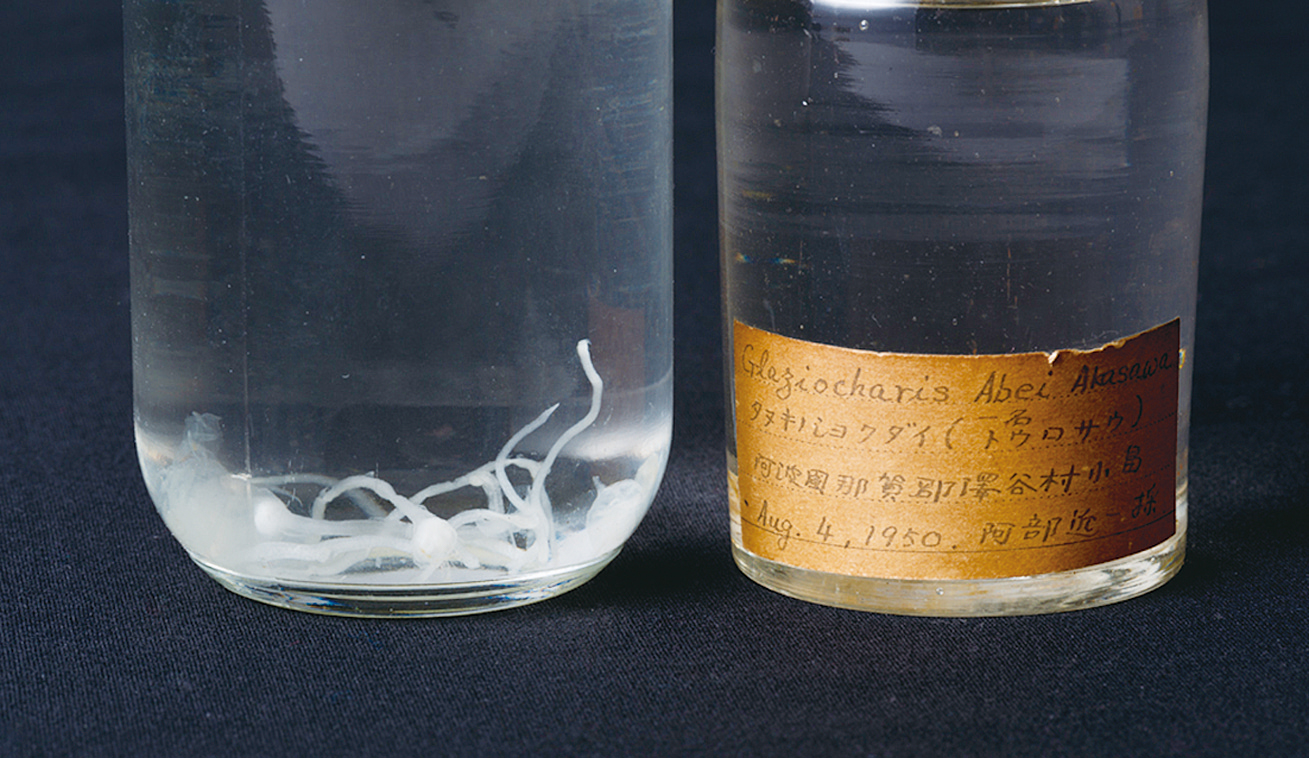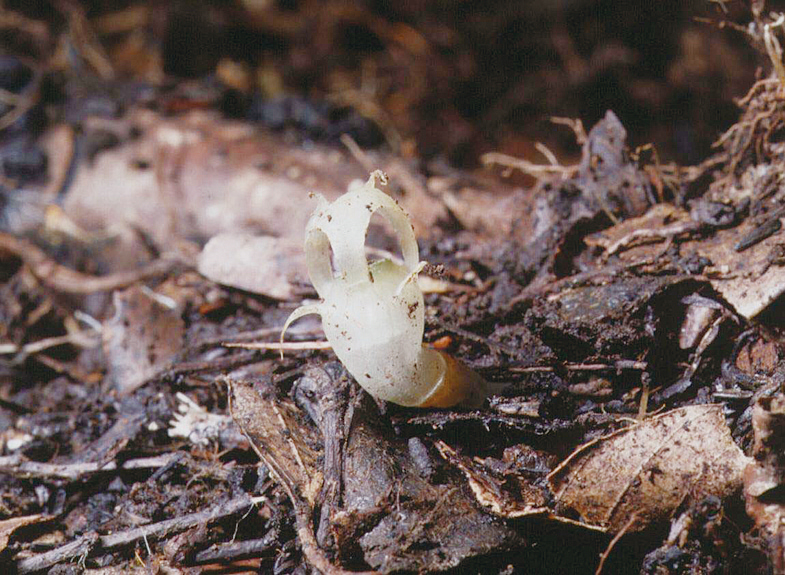B21
Thismia abei (Akasawa) Hatus.
type specimens of a peculiar plant discovered among unsorted specimens in the University of Tokyo Herbarium (TI)
Thismia abei (Akasawa) Hatus. (Burmanniaceae) is a saprophytic plant that grows in leaf litter in evergreen forests. It lacks chlorophyll and produces a peculiar flower close to the ground. The Japanese name ‘Tanuki-no-shokudai’ means ‘raccoon dog holding a candle above its head’ after its habit. The epithet abei honors Chikaichi Abe, its discoverer. Abe is also known for his contributions to our knowledge of the flora of Tokushima Prefecture. Thismia abei, a rare plant, was first discovered in Tokushima Prefecture, then later in Miyazaki and Shizuoka prefectures and in the Tokyo Metropolitan area (Kôzu-shima Island). The two bottled specimens were discovered among unsorted material in the storeroom of the Herbarium of the University of Tokyo (TI). The specimens were apparently liquid-preserved, but over the years the liquid had evaporated. The labels revealed the specimens to be Thismia abei, collected in Tokushima Prefecture on 4 August 1950 by Chikaichi Abe. The original description of T. abei (Akasawa 1950) indicated that these were paratypes. According to the original description, the holotype was deposited in the Herbarium of the National Museum of Nature and Science, Tokyo (TNS), and an isotype in TI. Although we attempted to find the type specimens in TNS and TI, we were unsuccessful in our search. According to the International Code of Nomenclature for algae, fungi, and plants (ICN: McNeill et al. 2012), if the holotype and isotype are destroyed or missing, a lectotype should be selected from among the paratypes. This meant that the specimens discovered in TI were candidates for lectotypification. Type specimens are the most important elements for determining the correct application of the names of species. After continued searching, however, an isotype was discovered in the herbarium of the Tokushima Prefectural Museum (TKPM), making it unnecessary to designate a lectotype from the material at TI. The paratypes, therefore, are still paratypes, but nevertheless important as being among the original material examined when Thismia abei was first described (Ikeda et al. 2014). (Hiroshi Ikeda)
References
Akasawa, Y. (1950) A new species of Glaziocharis (Burmanniaceae) found in Japan. Journal of Japanese Botany 25: 193–196, pls. 1 & 2.
Ikeda, H. et al. (2014) Lectotypification of Glaziocharis abei Akasawa (Burmanniaceae). Journal of Japanese Botany 89: 176–180.
McNeill, J. et al. (2012) International Code of Nomenclature for algae, fungi, and plants (Melbourne Code). Koenigstein: Koeltz Scientific Books.
大橋広好・永益英敏・邑田 仁(編)(2014) 『国際藻類・菌類・植物命名規約(メルボルン規約)2012』北隆館。


